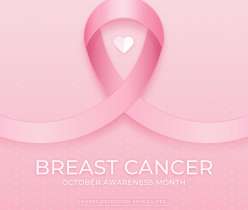When you are diagnosed with cancer, your doctor will inform you at what stage your cancer has proceeded. Cancer is typically labelled in 1 to 4 stages, with the fourth being the most serious. The cancer stage tells you where a cancer is located, how far it has grown, and if it has spread to nearby lymph nodes or other body parts. Before initiating a breast cancer treatment, doctors may perform physical exams, imaging scans, and other tests to determine the cancer’s stage. Staging of cancer may not be completed until all the tests are finished. Once your doctor determines the stage, breast cancer treatment begins; breast cancer medications are prescribed to control the growth of the tumour. Moreover, breast cancer prevention starts with healthy habits. Limiting alcohol consumption and staying physically active can help reduce your breast cancer risk.
What is cancer staging?
Stage refers to the extent of your cancer progression, such as how big the tumour is and if it has spread to other body parts. Knowing the exact stage of your cancer helps your doctor:
- Understand how severe your condition is and what are your chances of survival
- Determine the best treatment for you
How cancer stage is determined
To know about the stage of your cancer disease, your doctor may perform X-rays, lab tests, and other tests or procedures.
Staging systems
It is a system to describe the amount and spread of cancer in a patient’s body using TNM. It Is the most common tool doctors use to define the cancer stage. There are many staging systems; one such is the TNM staging system, which is used for many types of cancer.
Breast cancer stages
The stages are I, II, III, or IV. Normally, the higher the number, the more advanced cancer.
- Stage 0: Cancer has been diagnosed at an early stage. It begins in the breast ducts or milk glands and stays there. You may hear about the term in situ, which means in the original place.
- Stage I – At this level, breast cancer is invasive, meaning it has broken free to attack healthy tissue.
- Stage IA: Cancer has spread into the fatty breast tissue. At this stage, the tumour itself is no larger than a peanut, or there may be no tumour
- Stage IB: Some cancer cells are there but, in tiny amounts, have been found in lymph nodes.
- Stage II – Cancer has grown and spread
- II A: In this stage, the tumour in the breast is still small, if there is one at all. There may be no cancer growth in the lymph nodes, or it may have spread to as many as three.
- II B: Breast tumour is bigger; it may be the size of a walnut or bigger than a lime. It may or may not spread to lymph nodes.
-
- Stage III – Cancer has not progressed or spread to bones/organs, but it’s considered an advanced stage and hard to fight.
- III A: Cancer has been found in up to nine lymph nodes attached from your underarm to your collarbone. Or it has progressed to lymph nodes or increased the size of lymph nodes deep in your breast. Some people have a large tumour, but other times there’s no tumour.
- III B: At this stage, the tumour has grown into the chest wall or skin around your breast, even if it hasn’t progressed to lymph nodes.
- III C: Cancer has been found in ten or more lymph nodes or has spread above or below your collarbones. The stage can also be called IIIC if fewer lymph nodes outside the breast are affected, but those inside it become larger or cancerous.
- Stage IV: cancer cells have spread far away from the breast and lymph nodes right around it. Commonly affected sites are the bones, liver, lungs, and brain. This stage is often referred to as metastatic, meaning the cancer cells have spread to the body’s region where it was first developed.
The TNM staging system for breast cancer
Doctors and health care experts grouped cancers by the letters T, N, or M. Each letter indicates something about your cancer.
-
- T means tumour or the cancerous lump found in the breast itself. The higher the number is given after it, the bigger or wider the mass.
- N stands for nodes in lymph nodes. These lymph nodes are means to catch abnormal cells before they travel to other parts of the body. Here from 0 to III tells you whether cancer has spread to lymph nodes near the breast and, if so, how many.
- M stands for metastasis, which means cancer has spread beyond the breast and lymph nodes.
Takeaway
If you know about breast cancer, you will want to know at what stage your cancer is. The answers will help you and your doctors know more about your condition and decide on your treatments. Doctors have several ways to determine what stage of breast cancer you have. The stages of cancer describe how far cancer has grown and spread—clues from physical exams, X-rays, biopsies, bone scans, other images, and blood tests.
A breast cancer diagnosis includes a lot. Your doctor will collect tissues from your breasts and lymph nodes under the microscope to find out more. You will then be prescribed breast cancer treatment for your stage of cancer. Your doctor will also explain the risk and benefits of breast cancer drugs and their side effects. You will have queries. Inform your doctor when you don’t understand something. Ask your doctor to get more information and raise breast cancer awareness.
Talking about breast cancer without hesitation can be an important but awkward step in supporting breast cancer awareness. October is breast cancer awareness month 2022. Hope this article will help you learn more about the disease, and you will be able to spread this information as much as possible among your loved ones and friends. On this pink October, let’s courage someone else on their journey.
Also Read: 5 Simple Tips To Curb Breast Cancer
https://www.reliablerxpharmacy.com/blog/5-simple-tips-curb-breast-cancer/



